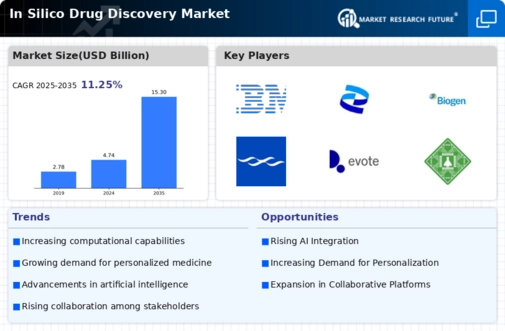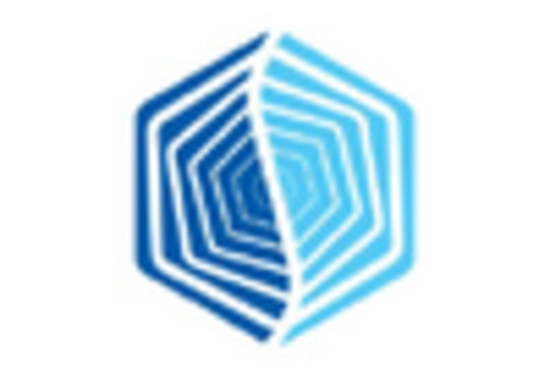Increased Focus on Drug Repurposing
The In Silico Drug Discovery Market is increasingly focusing on drug repurposing, which involves finding new therapeutic uses for existing drugs. This approach is gaining traction due to its potential to expedite the drug development process and reduce costs. In silico methods facilitate the identification of novel indications for established compounds by analyzing existing data and predicting new interactions. The market for drug repurposing is expected to expand significantly, with estimates suggesting it could reach USD 50 billion by 2026. This trend not only enhances the efficiency of drug discovery but also aligns with the growing emphasis on innovative solutions in the pharmaceutical sector.
Advancements in Computational Technologies
The In Silico Drug Discovery Market is experiencing a surge in advancements in computational technologies, which are revolutionizing the drug discovery process. Enhanced algorithms and machine learning techniques are enabling researchers to analyze vast datasets more efficiently, leading to quicker identification of potential drug candidates. The integration of high-performance computing allows for complex simulations and modeling, which can predict molecular interactions with greater accuracy. This technological evolution is not only reducing the time required for drug development but also significantly lowering costs. As a result, the market is projected to grow at a compound annual growth rate of approximately 15% over the next five years, driven by the increasing reliance on computational methods in pharmaceutical research.
Regulatory Support for Computational Approaches
The In Silico Drug Discovery Market is benefiting from increasing regulatory support for computational approaches in drug development. Regulatory bodies are recognizing the value of in silico methods in enhancing the efficiency and safety of drug discovery processes. Guidelines are being established to encourage the integration of computational models in regulatory submissions, which is likely to foster innovation within the industry. This supportive regulatory environment is expected to drive the adoption of in silico methodologies, as companies seek to align their research practices with evolving standards. As a result, the market is poised for growth, with an anticipated increase in the number of approved in silico applications in the coming years.
Rising Demand for Cost-Effective Drug Development
The In Silico Drug Discovery Market is witnessing a rising demand for cost-effective drug development solutions. Traditional drug discovery processes are often prohibitively expensive and time-consuming, leading to a growing interest in silico methods that can streamline these processes. By utilizing computational models, pharmaceutical companies can reduce the need for extensive laboratory testing, thereby cutting costs significantly. Reports indicate that in silico approaches can decrease the overall drug development expenditure by up to 30%. This financial incentive is compelling many organizations to adopt in silico methodologies, further propelling the market's growth as companies seek to enhance their research efficiency while maintaining budgetary constraints.
Growing Collaboration Between Academia and Industry
The In Silico Drug Discovery Market is witnessing a growing collaboration between academia and industry, which is fostering innovation and accelerating drug discovery efforts. Academic institutions are increasingly partnering with pharmaceutical companies to leverage their expertise in computational biology and data analysis. These collaborations are facilitating the sharing of knowledge and resources, leading to the development of novel in silico tools and methodologies. As a result, the market is likely to benefit from a more robust pipeline of drug candidates, with collaborative projects expected to yield promising results in the near future. This trend underscores the importance of interdisciplinary approaches in advancing drug discovery.


















Leave a Comment